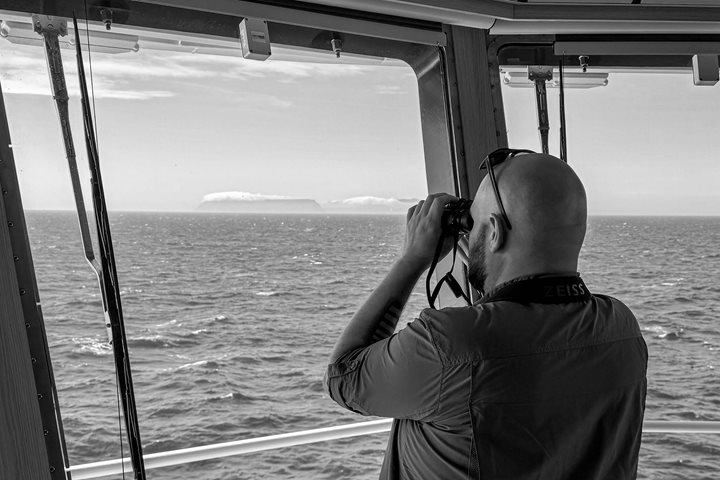This morning, National Geographic Resolution cruised north up Davis Strait along the west coast of Greenland, en route to our first landing of the expedition. Davis Strait is the world's broadest strait and was named after John Davis who searched for the Northwest Passage in 1585. Despite travelling deep into Cumberland Sound on the southeast corner of Baffin Island, he could not find any obvious opening that would lead him to “the passage.” Davis returned the following year, but he was halted by ice as he traveled north in Davis Strait. While he did not find the Northwest Passage, his study (and mapping) of this area and the discovery of the entrance of Hudson Strait greatly increased Europe’s knowledge of the Arctic. A few years after exploring this area, John Davis sighted the Falkland Islands. The British base their claim to the Falklands on the sighting Davis made in 1592.
After lunch, we arrived to Sisimiut, the second largest town on the world’s largest island. Under overcast skies, the approach was brightened by the colors of the buildings on the shore. After Lutheran minister Hans Egede arrived in Greenland in 1721, Scandinavian culture began to impose itself on the new colony. Prefab houses were shipped north as kits, and buildings with certain functions generally had the same color. If you wanted something from the store, you looked for a red building. If you needed a hospital, you headed for the yellow building. Fishermen would bring their catch to a blue structure, indicating the local fish plant. Nowadays, many of the colors are simply decorative, but like in the days of old, they help to brighten the raw arctic landscape.
After lunch, we divided into different groups to enjoy walks around town. Very close to where the ship docked was an active harbor, shipyard, and fish processing plant (Royal Greenland) that is owned by the government. It is Greenland’s largest company. The company built the processing facility in Sisimiut in 1924, and it processes largely shrimp, cod, halibut, and snow crab. While whaling was the primary occupation throughout the 18th and 19th centuries, today fishing is the mainstay of the island’s economy, making up 93% of Greenland’s exports.
Up around the church, we peeked into some of the historic buildings of the old colony and stood in the iconic arch and jaws of a bowhead whale killed in 1905. What a beautiful and iconic Greenland community to start this adventure!
Photo caption and photographer: Sisimiut Harbor. Photo by Elise Lockton







